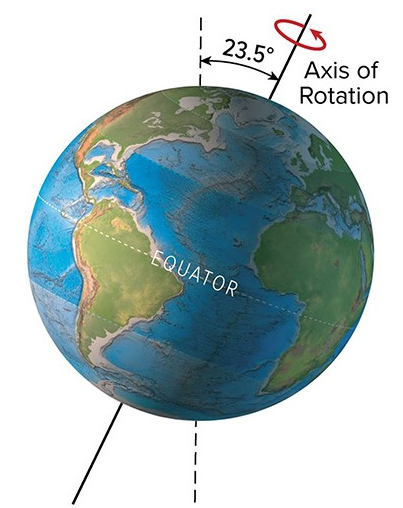From September to March, the Southern Hemisphere receives
A) less radiation than the Northern Hemisphere.
B) more radiation than the Northern Hemisphere.
C) exactly 12 hours of daylight and darkness.
D) 24 hours of daylight.
Answer: B
You might also like to view...
The present-day tilt of Earth's axis of rotation is 23.5°. What would be a result of less tilt, as shown here?

A) High latitudes would receive less direct sunlight during the summer, causing cooler temperatures
B) A decrease in glaciers
C) More hours of sunlight on the equator, resulting in warmer global temperatures
D) All of these are correct.
Which of the following lines of evidence would best support the argument that Earth's atmosphere is warming as a result of an increase in solar output but would not be the argument that it is warming because of increased concentrations of greenhouse
gases? A) Earth's temperature stabilizes when the concentration of greenhouse gases in the atmosphere begins to decrease. B) Both the troposphere and stratosphere show warming trends. C) The stratosphere shows a warming trend, but the troposphere shows a cooling trend. D) Warming trends are detected in some regions of the planet but not others.
The higher the UV Index, the faster a person will sunburn
Indicate whether the statement is true or false
The most common reason that dew forms is ________
A) plants give up water to the atmosphere when the temperature decreases B) fast heating of the atmosphere when the sun first comes up in the morning C) a rapid increase in water vapor in the air during the night D) radiant cooling of the ground and adjacent air in the evening